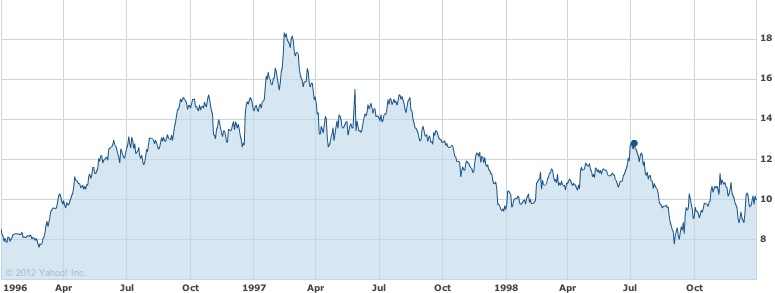To assess impact, you need to know where in your value chain you are creating and diminishing value, and to whom.
An example of how we analyze impacts along the value chain.
Where's your impact?
For some companies the biggest impacts are generated by their supply chain, for others at the end-of-life. Some find it’s in production while others in distribution or consumption. For example, for an IT company the impacts come primarily from mining & processing metals, human rights in mining and assembly, and from recycling the hazardous materials at the end-of-life. For a detergent company, the bulk of the product's impacts are in the washing phase, while for a packaging company it's in the raw materials and disposal phases. The impacts may be environmental, community-based, labour or governance. And they may be those impacts you have on the world, or those impacts the world has on you. Know their relative importance, and you can manage them. Otherwise, they may surprise you...
Source: Yahoo Finance; Branded! by Michael Conroy
When the market demands change
Nike’s stock price, which had been rising relentlessly, plummeted as stories about sweatshop suppliers surfaced end ‘96 – ’97. It took Nike years to recover the value through intensive investments in cleaning up its supply chain. As Hannah Jones, Nike Director of Sustainability, told her board: "If we're going to be naked, we'd better be buff."
Apple faces the same issues today with conditions at Foxconn. As do some food companies. For example...
Nestle's Responsible Sourcing Guidelines: Framework for Forest-based Materials (Downloaded 29.12.12)
When your customer demands change. Now.
Nestle learned a similar lesson when Greenpeace targeted KitKat in 2010, for working with Sinar Mas, a company that cut down rain forest to produce palm oil. Within months, Nestle had changed their procurement policy for all forest products, paper, oil and nuts included. But it's Nestle's suppliers that now have to implement the changes - and (at least to them) unexpectedly.
Nestle was just as surprised when Walmart introduced their sustainability score-card, and many companies were surprised when the Carbon Disclosure Project suddenly became a "must report" questionnaire (to the point that Apple is being criticised for not participating...)
Net added value
We take a look at where in your value chain you are creating and diminishing value, and to whom. Then, we translate that into business value and business opportunities. Armed with this, you can focus on the impacts that really matter to your business so you focus where you get the best return.
To understand impact, you need to know context (You & Sustainability: Insight)




